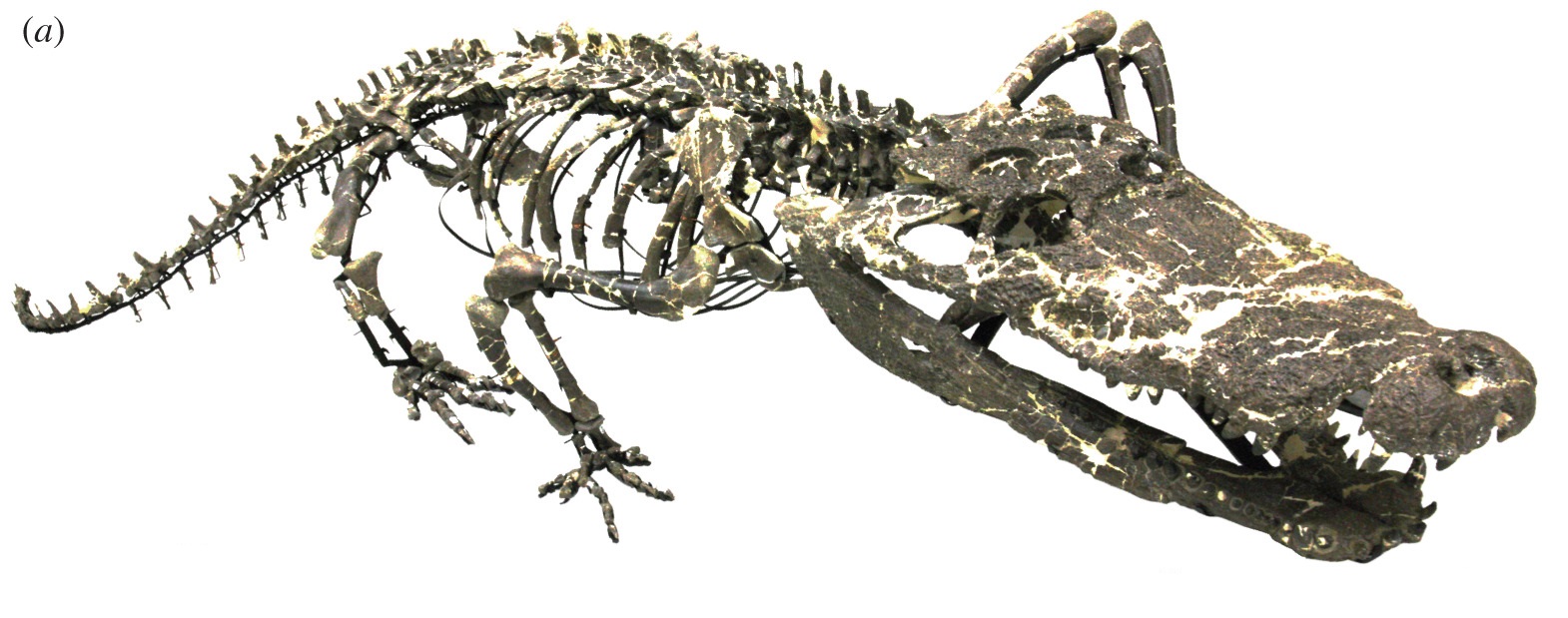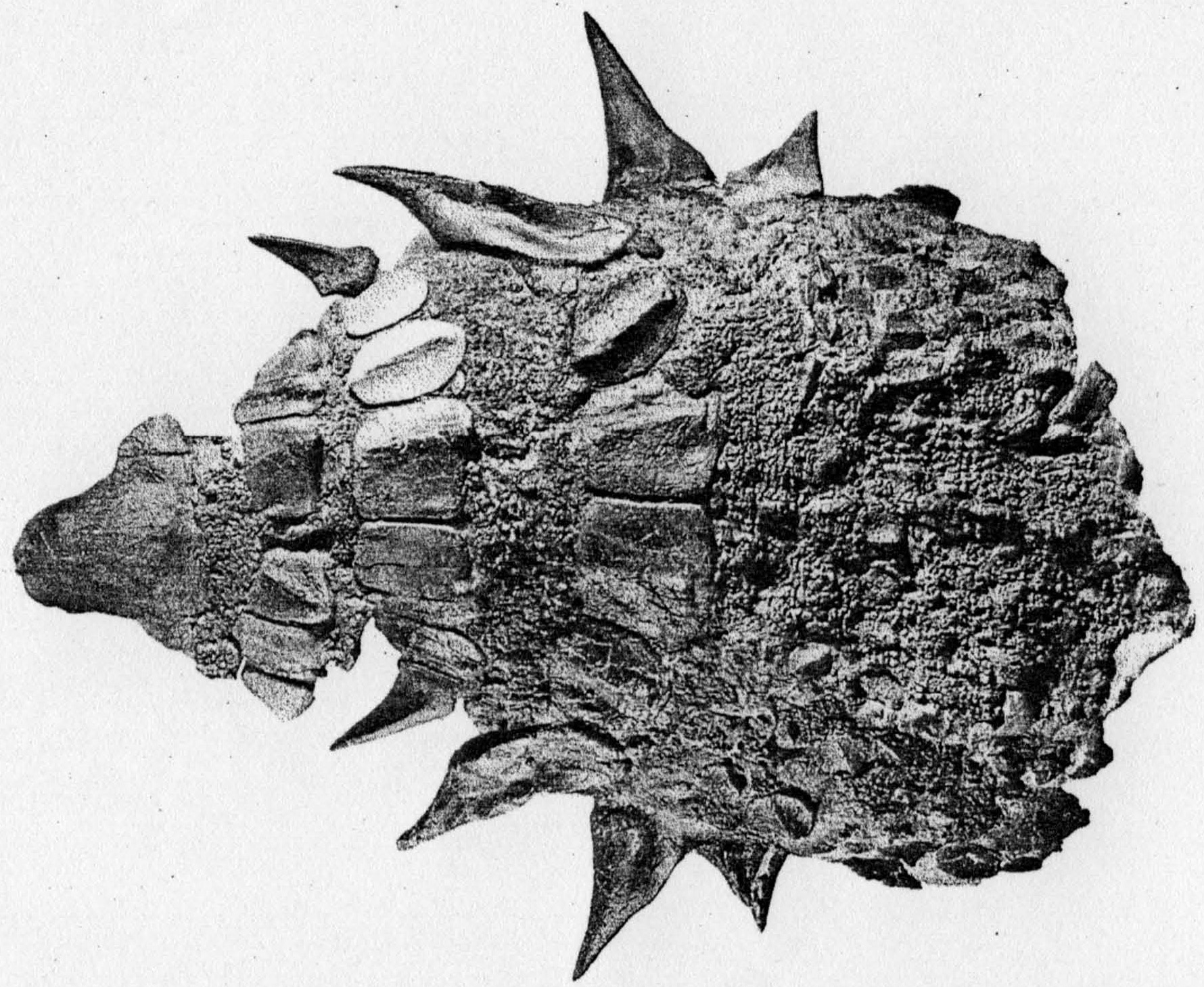|
Spicomellus
''Spicomellus'' is an extinct genus of early ankylosaurian dinosaur from the El Mers III Formation (Bathonian-Callovian) of Morocco. The genus contains a single species, ''S. afer'', known from a single rib with fused osteoderms. ''Spicomellus'' represents the oldest named ankylosaur. Discovery and naming The ''Spicomellus'' holotype specimen, NHMUK PV R37412, was discovered in layers of the El Mers III Formation near Boulahfa in Boulemane, Fès-Meknès region, Morocco. It was later acquired by London's Natural History Museum from a commercial fossil dealer. The specimen consists of a single rib with four co-ossified spines. The holotype was CT scanned and histologically sectioned to confirm that it was an ankylosaurian. In 2021, Maidment et al. described ''Spicomellus afer'' as a new genus and species of ankylosaurian thyreophoran based on these fossil remains. The generic name, ''Spicomellus'', combines the Latin words ''spica'', meaning "spike" and ''mellum'', which refe ... [...More Info...] [...Related Items...] OR: [Wikipedia] [Google] [Baidu] |
El Mers III Formation
The El Mers Group is a Group (geology), geological group in the Middle Atlas of Morocco. It is subdivided into three formations named the El Mers I, II, and III Formations, respectively. It is a marine deposit primarily consisting of marl, with gypsum present in the upper part of unit 3. It is the lateral equivalent of the terrestrial Guettioua Sandstone. Dinosaur remains are among the fossils that have been recovered from the group, most notably those of sauropods and the unusual thyreophorans ''Adratiklit'', ''Thyreosaurus'', and ''Spicomellus''. This formation records a series of coastal to shallow marine settings of Middle Jurassic (with an age of Bajocian-Bathonian for El Mers 1 and a Bathonian-Callovian? for El Mers II-III), based on detailed stratigraphical biomarkers such as ammonites or Foranimifera. Paleoenvironment The El Mers formations are composed primarily of marls with intermittent layers of limestone and sandstone, characterized by abundant organic matter and Be ... [...More Info...] [...Related Items...] OR: [Wikipedia] [Google] [Baidu] |
2021 In Archosaur Paleontology
This article records new taxa of fossil archosaurs of every kind that was binomial nomenclature, described during the year 2021, as well as other significant discoveries and events related to paleontology of archosaurs that occurred in 2021. Pseudosuchians New pseudosuchian taxa General pseudosuchian research * A study on the phylogenetic relationships of pseudosuchian archosaurs, aiming to determine drivers of body size evolution in this group, is published by Stockdale & Michael Benton, Benton (2021); the study is subsequently criticized by Benson ''et al.'' (2022). * The first occurrence of the track type ''"Chirotherium" lulli'' (inferred to be produced by a pseudosuchian archosaur) from western North America is reported from the Owl Rock Member of the Chinle Formation (Utah, United States) by Milner ''et al.'' (2021). * A study on the skeletal anatomy and phylogenetic relationships of ''Revueltosaurus callenderi'' is published by Parker ''et al.'' (2021). * A study on ... [...More Info...] [...Related Items...] OR: [Wikipedia] [Google] [Baidu] |
Ankylosauria
Ankylosauria is a group of herbivorous dinosaurs of the clade Ornithischia. It includes the great majority of dinosaurs with armor in the form of bony osteoderms, similar to turtles. Ankylosaurs were bulky quadrupeds, with short, powerful limbs. They are known to have first appeared in North Africa during the Middle Jurassic, and persisted until the end of the Late Cretaceous. The two main families of ankylosaurians, Nodosauridae and Ankylosauridae primarily originated from the Northern Hemisphere (North America, Europe and Asia), but the more basal Parankylosauria originated from southern Gondwana (South America, Australia and Antarctica) during the Cretaceous. Ankylosauria was first named by Henry Fairfield Osborn in 1923.Osborn, H. F. (1923). "Two Lower Cretaceous dinosaurs of Mongolia." ''American Museum Novitates'', 95: 1–1/ref> In the Linnaean classification system, the group is usually considered either a suborder or an infraorder. It is contained within the group ... [...More Info...] [...Related Items...] OR: [Wikipedia] [Google] [Baidu] |
Susannah Maidment
Susannah "Susie" Catherine Rose Maidment is a British palaeontologist at the Natural History Museum, London. She is also an honorary Professor at the University of Birmingham. She is internationally recognised for her research on ornithischian dinosaur evolution, and was awarded the 2016 Hodson Award of the Palaeontological Association and the 2017 Lyell Fund of the Geological Society of London. She was featured as a 2019 National Geographic Women of Impact. Education and career Maidment studied geology at Imperial College London, graduating with an MSc in 2003. She completed her PhD at the University of Cambridge in 2007, in which she studied the systematics of the dinosaur group Stegosauria. Her research was supervised by David Norman and Paul Upchurch. Following time working as an exploration geologist in Vietnam, she moved in 2009 to work with Paul Barrett at the Natural History Museum, London, as a postdoctoral researcher co-investigator on a NERC-funded project on ornith ... [...More Info...] [...Related Items...] OR: [Wikipedia] [Google] [Baidu] |
Middle Jurassic
The Middle Jurassic is the second Epoch (geology), epoch of the Jurassic Period (geology), Period. It lasted from about 174.1 to 161.5 million years ago. Fossils of land-dwelling animals, such as dinosaurs, from the Middle Jurassic are relatively rare, but geological formations containing land animal fossils include the Forest Marble Formation in England, the Kilmaluag Formation in Scotland,British Geological Survey. 2011Stratigraphic framework for the Middle Jurassic strata of Great Britain and the adjoining continental shelf: research report RR/11/06 British Geological Survey, Keyworth, Nottingham. the Calcaire de Caen of France, the Daohugou Beds in China, the Itat Formation in Russia, the Tiouraren Formation of Niger, and the Isalo III Formation of western Madagascar. Rocks of the Middle Jurassic were formerly (until about 1980s) in Europe called ''Dogger'' or ''Brown Jurassic''. Paleogeography During the Middle Jurassic Epoch, Pangaea began to separate into Laurasia and Gond ... [...More Info...] [...Related Items...] OR: [Wikipedia] [Google] [Baidu] |
Adratiklit
''Adratiklit'' (meaning "mountain lizard") is an extinct genus of herbivorous stegosaurian Dinosaurs, dinosaur that lived on the supercontinent Gondwana during the Middle Jurassic period (168–164 million years ago). The genus contains a single species, ''Adratiklit boulahfa''. Its remains were found in the El Mers III Formation (Bathonian–?Callovian), near Boulahfa, south of Boulemane, Fès-Meknès, north Morocco. Eurypodan dinosaurs, in particular stegosaurs, were diverse and abundant in Laurasia (nowadays the northern continents) during the Jurassic, but their remains are extremely rare in deposits of Gondwana, (nowadays the southern continents). Nevertheless, the existence of fragmentary remains and trackways in the deposits of Gondwana indicate the presence of eurypodan taxa there. ''Adratiklit'' is the first described eurypodan taxon from North Africa, as well as—along with ''Thyreosaurus''—one of the oldest known stegosaurs (being similar in age to ''Bashanosaurus'', ... [...More Info...] [...Related Items...] OR: [Wikipedia] [Google] [Baidu] |
Eurypoda
Thyreophora ("shield bearers", often known simply as "armored dinosaurs") is a group of armored ornithischian dinosaurs that lived from the Early Jurassic until the end of the Cretaceous. Thyreophorans are characterized by the presence of body armor lined up in longitudinal rows along the body. Primitive forms had simple, low, keeled scutes or osteoderms, whereas more derived forms developed more elaborate structures including spikes and plates. Most thyreophorans were herbivorous and had relatively small brains for their body size. Thyreophora includes two major subgroups, Ankylosauria and Stegosauria. In both clades, the forelimbs were much shorter than the hindlimbs, particularly in stegosaurs. Thyreophora has been defined as the group consisting of all species more closely related to '' Ankylosaurus'' and ''Stegosaurus'' than to ''Iguanodon'' and ''Triceratops''. It is the sister group of Cerapoda within Genasauria. Characteristics Members of Thyreophora are characteris ... [...More Info...] [...Related Items...] OR: [Wikipedia] [Google] [Baidu] |
Laurasia
Laurasia () was the more northern of two large landmasses that formed part of the Pangaea supercontinent from around ( Mya), the other being Gondwana. It separated from Gondwana (beginning in the late Triassic period) during the breakup of Pangaea, drifting further north after the split and finally broke apart with the opening of the North Atlantic Ocean 56 Mya. The name is a portmanteau of Laurentia and Eurasia. Laurentia, Avalonia, Baltica, and a series of smaller terranes, collided in the Caledonian orogeny c. 400 Mya to form Laurussia. Laurussia then collided with Gondwana to form Pangaea. Kazakhstania and Siberia were then added to Pangaea 290–300 Mya to form Laurasia. Laurasia finally became an independent continental mass when Pangaea broke up into Gondwana and Laurasia. Terminology and origin of the concept Laurentia, the Palaeozoic core of North America and continental fragments that now make up part of Europe, collided with Baltica and Aval ... [...More Info...] [...Related Items...] OR: [Wikipedia] [Google] [Baidu] |
Gondwana
Gondwana ( ; ) was a large landmass, sometimes referred to as a supercontinent. The remnants of Gondwana make up around two-thirds of today's continental area, including South America, Africa, Antarctica, Australia (continent), Australia, Zealandia, Arabian Peninsula, Arabia, and the Indian subcontinent. Gondwana was formed by the Accretion (geology), accretion of several cratons (large stable blocks of the Earth's crust), beginning with the East African Orogeny, the collision of India and Geography of Madagascar, Madagascar with East Africa, and culminating in with the overlapping Brasiliano orogeny, Brasiliano and Kuunga orogeny, Kuunga orogenies, the collision of South America with Africa, and the addition of Australia and Antarctica, respectively. Eventually, Gondwana became the largest piece of continental crust of the Paleozoic Era, covering an area of some , about one-fifth of the Earth's surface. It fused with Laurasia during the Carboniferous to form Pan ... [...More Info...] [...Related Items...] OR: [Wikipedia] [Google] [Baidu] |
North Africa
North Africa (sometimes Northern Africa) is a region encompassing the northern portion of the African continent. There is no singularly accepted scope for the region. However, it is sometimes defined as stretching from the Atlantic shores of the Western Sahara in the west, to Egypt and Sudan's Red Sea coast in the east. The most common definition for the region's boundaries includes Algeria, Egypt, Libya, Morocco, Tunisia, and Western Sahara, the territory territorial dispute, disputed between Morocco and the list of states with limited recognition, partially recognized Sahrawi Arab Democratic Republic. The United Nations’ definition includes all these countries as well as Sudan. The African Union defines the region similarly, only differing from the UN in excluding the Sudan and including Mauritania. The Sahel, south of the Sahara, Sahara Desert, can be considered as the southern boundary of North Africa. North Africa includes the Spanish cities of Ceuta and Melilla, and the ... [...More Info...] [...Related Items...] OR: [Wikipedia] [Google] [Baidu] |
Protuberum
''Protuberum'' is an extinct genus of traversodontid cynodonts known from a single species ''Protuberum cabralense'',The specific name ''cabralense'' is "necessarily emended from the original ''P. cabralensis'' because ''Protuberum'' is a neuter generic name". from the Middle Triassic of Brazil., , & 2009 “A New Traversodontid Cynodont (Therapsida, Eucynodontia) from the Middle Triassic Santa Maria Formation of Rio Grande do Sul, Brazil” ''Palaeontology'' 52(1):229-250 As with all genera of the family Traversodontidae, ''Protuberum'' was a herbivore, with a specialized grinding action when feeding. The two known specimens were collected a number of years apart from sediments of the Alemoa Member of the Santa Maria Formation in Geopark of Paleorrota, Rio Grande do Sul Rio Grande do Sul (, ; ; "Great River of the South") is a Federative units of Brazil, state in the South Region, Brazil, southern region of Brazil. It is the Federative units of Brazil#List, fifth-most pop ... [...More Info...] [...Related Items...] OR: [Wikipedia] [Google] [Baidu] |
Gondwana Research
''Gondwana Research'' is a peer-reviewed scientific journal with an "all earth science" scope and an emphasis on the origin and evolution of continents. It is part of the Elsevier Elsevier ( ) is a Dutch academic publishing company specializing in scientific, technical, and medical content. Its products include journals such as ''The Lancet'', ''Cell (journal), Cell'', the ScienceDirect collection of electronic journals, ... group, published by Journal Center, China University of Geosciences Beijing, 29 Xueyuan Road, Beijing 100083, China. References External links * Geology journals Elsevier academic journals English-language journals {{Geology-journal-stub ... [...More Info...] [...Related Items...] OR: [Wikipedia] [Google] [Baidu] |





